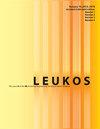开放式办公室的首选亮度分布与一天中的时间和主观警觉性有关
IF 2.6
2区 工程技术
Q2 CONSTRUCTION & BUILDING TECHNOLOGY
引用次数: 12
摘要
动态照明是照明研究的新趋势之一;在适当的时间提供适当的照明水平可能会提高办公室工作人员的警觉性和表现。然而,他们可能有偏离这种“健康”照明的偏好。同时,建筑环境变得越来越自动化,基于占用的控制是减少办公室照明能源消耗的最著名的例子之一。然而,对于多使用者办公空间中未使用区域的照明水平的偏好尚未得到解决。因此,我们研究了在单一占用情况下,亮度分布偏好与时间和主观警觉性(SA)的关系。当我们第一次探测SA时,参与者(N = 30)每天设置六次周围和背景照明。我们的结果清楚地表明,一个子集偏好不同的亮度分布;参与者的警觉性也有波动。他们的偏好有时会偏离典型的动态照明场景,这表明他们并不总是喜欢健康的照明。此外,我们确定了SA对偏好的影响,无论是否控制了一天中的时间。因此,这项研究表明,当我们想要在办公室没有被充分占用的情况下提供令人满意的照明条件时,我们需要解决这两个因素。这些可能会影响其他照明偏好,因此值得更多的研究关注。由于我们发现了巨大的个体差异,我们建议将个性化动态场景作为未来研究的重点。本文章由计算机程序翻译,如有差异,请以英文原文为准。
Preferred luminance distributions in open-plan offices in relation to time-of-day and subjective alertness
ABSTRACT Dynamic lighting is one of the new trends in lighting research; providing the right lighting level at the right time could possibly increase the alertness and performance of office workers. However, they might have preferences that deviate from this “healthy” lighting. Simultaneously, the building environment becomes increasingly automated, with occupancy-based control as one of the most well-known examples to reduce offices’ lighting energy consumption. Nevertheless, preferences for lighting levels in the unoccupied area of the multi-occupant office space have not been addressed yet. Therefore, we studied luminance distribution preferences in relation to time of day and subjective alertness (SA) in a single occupancy scenario. Participants (N = 30) set the surrounding and background lighting six times a day as we first probed for SA. Our results clearly showed that a subset preferred varying luminance distributions; participants had fluctuating feelings of alertness, too. Preferences deviated sometimes from the typical dynamic lighting scenarios, suggesting that they do not always prefer healthy lighting. Moreover, we identified an effect of SA on the preferences, both with and without controlling for time of day. Hence, this study showed that we need to address these two factors when we want to provide satisfactory lighting conditions in case the office is not fully occupied. These are likely to affect other lighting preferences and therefore deserve more attention from research. Because we identified large individual differences, we suggest personalizing dynamic scenarios as the focus of future research.
求助全文
通过发布文献求助,成功后即可免费获取论文全文。
去求助
来源期刊

Leukos
工程技术-光学
CiteScore
7.60
自引率
5.60%
发文量
19
审稿时长
>12 weeks
期刊介绍:
The Illuminating Engineering Society of North America and our publisher Taylor & Francis make every effort to ensure the accuracy of all the information (the "Content") contained in our publications. However, The Illuminating Engineering Society of North America and our publisher Taylor & Francis, our agents, and our licensors make no representations or warranties whatsoever as to the accuracy, completeness, or suitability for any purpose of the Content. Any opinions and views expressed in this publication are the opinions and views of the authors, and are not the views of or endorsed by The Illuminating Engineering Society of North America and our publisher Taylor & Francis. The accuracy of the Content should not be relied upon and should be independently verified with primary sources of information. The Illuminating Engineering Society of North America and our publisher Taylor & Francis shall not be liable for any losses, actions, claims, proceedings, demands, costs, expenses, damages, and other liabilities whatsoever or howsoever caused arising directly or indirectly in connection with, in relation to, or arising out of the use of the Content. Terms & Conditions of access and use can be found at http://www.tandfonline.com/page/terms-and-conditions .
 求助内容:
求助内容: 应助结果提醒方式:
应助结果提醒方式:


